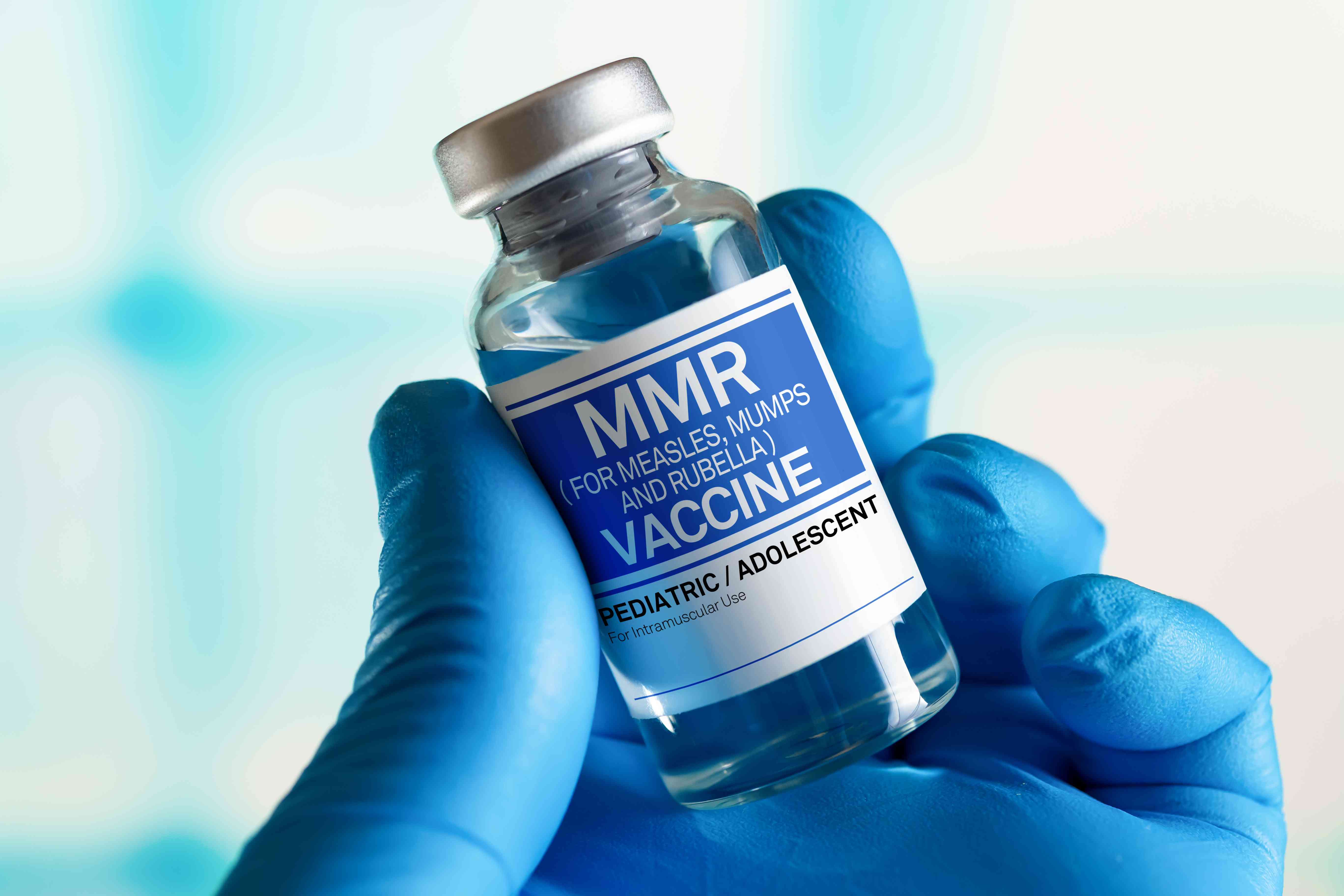Fact Check: Does the MMR Vaccine Really Contain 'Aborted Fetus Debris'? have stirred up controversy about the contents of the MMR vaccine. Here's what's really in the shot

Recent comments from RFK Jr

angelp / Getty Images
- RFK Jr. recently claimed that the MMR vaccine “contains a lot of aborted fetus debris and DNA particles.”
- While the rubella virus in the shot is grown using fetal cells, the vaccine does not contain cellular debris or DNA particles.
- The MMR vaccine only contains weakened strains of measles, mumps, and rubella viruses, and several inactive stabilizer ingredients.
U.S. Health and Human Services Secretary Robert F. Kennedy Jr. stirred up controversy Wednesday, telling reporters during a News Nation broadcast that the MMR vaccine “contains a lot of aborted fetus debris and DNA particles.”
Kennedy’s comment came while he was discussing the current measles outbreak, which has reached 884 cases, spread to 30 states, and resulted in three deaths.
During the appearance, Kennedy cited the debris and particles as a reason why some religious communities in America, like the Mennonites in Texas—where the outbreak originated—don’t want to get the MMR vaccine.
It’s accurate that some groups have long objected to the way the vaccine was developed, but vaccine experts stressed that Kennedy’s statement is highly misleading.
“It is not true that the vaccines have fetal elements, debris, cells in them,” Shira Doron, MD, chief infection control officer for Tufts Medicine and hospital epidemiologist at Tufts Medical Center, told Health. “But what is true is that the viruses that need to be grown to create vaccines are grown in cells. In some cases, human cells.”
Here’s what else to know about the production of the MMR vaccine, as well as what the shot actually does contain.
No Aborted Fetus Debris and DNA Particles in the Vaccine
There’s no evidence behind the claim that the MMR vaccine contains aborted fetus debris or DNA particles, experts said. However, the rubella portion of the vaccine (the “R” in MMR) does rely on fetal cells in its development.
Like many vaccines, the rubella vaccine has a weakened strain of the virus. Viruses can’t exist on their own—they live in the cells of other organisms. When developing a vaccine, scientists need to grow viruses in animal or human cells in the lab.
In the 1960s, scientists created a rubella vaccine with a virus grown from human fetal cells. Those cells were taken from a fetus involved in an elective abortion in Sweden at the time.
“In the ’40s, ’50s, and ’60s, when viral research was really taking off, cells were harvested from fetuses that had been aborted,” Amy Edwards, MD, an associate professor in the Department of Pediatrics at the Case Western Reserve University School of Medicine, told Health.
“These were not fetuses that were aborted to get these cell lines,” she added. “These were elective abortions that the women chose to have.”
Human fetal cells—specifically, fetal fibroblast cells—are the best option for the rubella vaccine, experts said. The rubella virus grows well in them, they have no other harmful viruses, and the cell line can be used virtually indefinitely.
That means that, in the lab, scientists can replicate the cells using the initial samples from the 1960s. In fact, cells descended from those samples are used to create the virus in today’s rubella vaccine.
“It’s not like they ongoingly harvest these cells from fetuses,” Edwards said. “It’s a replicating cell line.”
Once the virus has grown in the cell, scientists extract it for the vaccine. When the virus escapes, it “pops” the cell and kills it, Edwards said.
“Then there’s the purification step, which is where all cellular debris, DNA, extracellular DNA are washed away, so all you’re left with is pure virus for the vaccine,” Edwards said.
What Does the MMR Vaccine Contain?
The MMR vaccine contains weakened strains of the measles, mumps, and rubella viruses, as well as a few inactive ingredients that stabilize the virus, including sucrose (sugar) and gelatin.
“These are very standard drug ingredients,” Doron said. “Nothing that is associated with harm.”
As described above, cellular debris and DNA are removed from the rubella virus during purification. The shot only contains the weakened virus and stabilizing ingredients.
Experts emphasized that the MMR vaccine is safe and encouraged people to get vaccinated, especially in light of the ongoing outbreak.
“Among all the vaccines, MMR is by far among the safest. It has been used so extensively throughout the world and has been so well studied,” Doron said. “It’s also one of the most effective. It’s one of the best because it’s got that combination of safety and effectiveness that we love to see.”
This story originally appeared on: Health News - Author:Jenna Anderson














